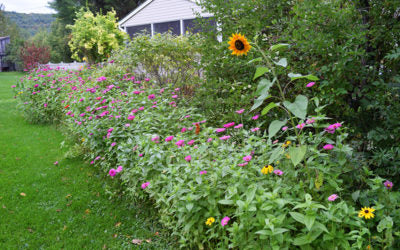May 09, 2023
There is nothing quite like the magic and surprise of cultivating a flower garden which springs to life from nature’s own wild design. A wildflower garden is as much a gardening prize as the perfectly tended rows of roses or geraniums.
Getting Started.
The most important bit of preparation for a wildflower garden is to clear the plot you want to plant. It is crucial that the plot be cleared of grasses and weeds since these will compete with the wildflowers for sunlight, water, and nutrients in the soil.
Choosing Varieties
Numerous plant and flower distributors offer mixes of wildflowers. Some are specifically summer blooms and others are designed to bloom in the fall. Just check your local garden store to see which varieties you prefer.
Planting
The fun part, and the easy part, of a wildflower garden is planting. You simply spread the seeds out over you cleared plot. You can do this by hand or, if you have a particularly large area, use a seed spreader.
To Cover or Not to Cover
You really do not need to cover the freshly planted seeds. Properly broadcast and planted, they will follow nature on this end of things.
It is a good idea to press them into the soil. Once you have spread the seeds out, you will want to press them into the soil. You can create compression by walking over a board placed over the seeds. But you can also just walk over it wearing shoes.
Do I Need to Protect the Seeds from Animals?
The simple answer is no. Birds and squirrels can eat their fill and you will have plenty of seeds which will take hold and bloom. They cannot really damage your wildflower plot.
Watch and Wait
If you planted a mix of annuals and perennials you will begin to see them germinate and sprout within about two weeks. Blooms will take approximately 5-7 weeks. Once you have planted your wildflower garden, you will have your own flowering meadow, and with perennials it will return year after year.

